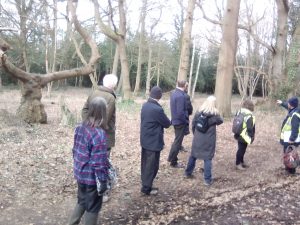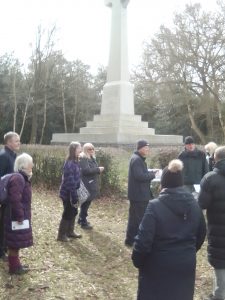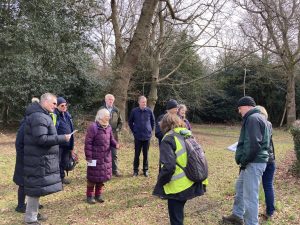This page will be used to share news and articles about Darrick and Newstead Woods. We welcome contributions from members of the Friends group or others in the community. If you want to contribute an article please send it us at FODNW@outlook.com
Bromley’s Falling Hedgehog Numbers: A Cause for Concern
Dr Judith John for Bromley Biodiversity Partnership February 2024
This is a plea for Bromley’s Hedgehogs, animals red-listed as vulnerable to extinction in the UK. Bromley Biodiversity Partnership has been running a Citizen Science Hedgehog Survey since 2017. Numbers of records received each year steadily increased, reaching a peak of 51 in 2021 but in 2022 the number of records received dropped by about 44% to 29 and in 2023 we received only 8 records. A regular recorder from Petts Wood who reported less hedgehog sightings in 2022 sent us the following comment at the end of 2023, ‘For the first time since wildlife camera installed in 2014 no hedgehogs or hedgehog droppings were seen.’
Hedgehogs become dehydrated easily and in 2022 the RSPCA reported that countrywide they had been called out to high numbers of dehydrated hedgehogs so the very hot weather and drought in London that year may have led to increased hedgehog deaths and reduced breeding success. Although summer 2023 appeared cooler than 2022, Met Office data for June 2023, (the month when young are often born), shows that rainfall was 50-75 % lower and mean temperature was 1.5-2-5 degrees C higher than averages for June 1991-2020. This suggests 2024 may again be a problem for hedgehogs. General UK data for 2023 hedgehog numbers is not yet available. We await publication of ‘The State of British Hedgehogs 2023’ in spring 2024 to see the wider UK picture. This may help us see whether the low number recorded in the London Borough of Bromley in 2023 is a local phenomenon, possibly due to less vigorous survey promotion, or whether there have been similar declines in other urban areas.
Records sent to Bromley Biodiversity Partnership have enabled us to see the apparent decrease in numbers of hedgehogs in Bromley, have helped us understand how hedgehogs are distributed in the Borough, highlighted some areas important for breeding animals and suggested where efforts to link greenspaces should be concentrated. Examples of environmental improvements for hedgehogs put in place by Bromley’s Conservation Team at High Elms and Friends Groups include targeted meadow creation and mixed native species hedgerow planting. These provide some protection for hedgehogs, food for some of the invertebrates hedgehogs eat and connectivity between sites. So please send records of any hedgehog sightings in 2024 to bromleybiodiversity@gmail.com with the date of sighting, Postcode or Grid Reference and any additional information such as evidence of breeding and whether they appear healthy, so targeted habitat improvements for hedgehogs can continue. Records also provide evidence required for the Partnership to successfully request the installation of ‘Hedgehog Highways’ amongst the Conditions accompanying some successful planning applications.
As individuals we can put out water for hedgehogs during hot, dry weather and cat or dog food to supplement their diet when invertebrates are hard to find, when hedgehogs are feeding young and before hibernation. We can make or buy a hedgehog home (there are instructions on the web), leave some undisturbed wild areas in gardens to provide shelter, hibernation sites and support the invertebrates hedgehogs eat and put in ‘Hedgehog Highways’ (13 x 13cm holes) between gardens and between gardens and greenspaces to improve connectivity and help keep them away from roads. See Hedgehog Street at www.hedgehogstreet.org for more ideas and advice. If you see a hedgehog that appears unwell, or is out in the day (sometimes, but not always, a sign of distress) please contact local experts Mavis Righini (02084621168) or Willow Wildlife Rescue (07858227337, www.willowwildlife.co.uk) for advice and help.
Thank you for any help you can manage.
Download a poster here
An Annual Report on the Flora of Darrick and Newstead Woods

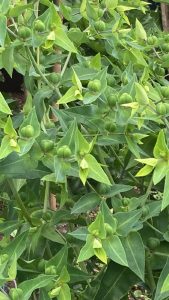
Hedge Mustard Caper Purge
As ever we thank Christine Wallace for the many hours she spends in the woods and meadows throughout the year surveying the flora of the reserve. Thanks to her meticulous record keeping we have survey results going back for many years. From these we can see how the flora of the reserve has changed and inform our future conservation work. These records greatly impressed our Green Flag judge when he visited the reserve. I thoroughly recommend a walk with Christine for anyone with an interest in wildflowers as she has a wealth of knowledge to share. Below you will find her report for 2023. A map of the areas can be found here and the full list of the more than 500 species found at
Report of Plant Survey 2023
by Christine Wallace 15/01/2024
The weather in the UK has continued to be rather irregular. 2023 was much warmer and wetter than normal. March, July and especially October were very wet with several named storms. This enabled taller grasses – which then restricted and hid the orchids on the lower end of Broadwater Meadow. The south side of Newstead Meadow was noticeably very boggy this year – and may be why I found a new rush (Toad rush) there. Autumn was very mild and wet and leaf fall very late, not much before Christmas. If or how this will affect plant growth in the Spring remains to be seen.
- Observations:
Contractors were brought in last year to reduce the tree cover along Central Ride in order to let in more light. This has resulted in the emergence of both red and white dead nettles, black horehound and bugle, woundwort and common figwort and giant fescue where they have not been seen before. - Another area on the southside of Broadwater Wood (opposite the sports field) which was recently cleared of bramble, has also allowed several grasses and ferns to grow, including a new species, Hard Shield Fern.
- Another slightly ‘odd’ patch is in Newstead Wood, alongside the tarmac path. Suddenly this year, several species new to Newstead Wood have emerged: Hawkweed oxtongue, Hedge mustard, Shepherds purse, Guernsey fleabane, Spear thistle, Rough hawksbeard, Ribwort plantain, Perennial Rye grass. I don’t know why. I can’t see any obvious ground disturbance or dumping.
- Using the same Area plan as last year, there are 14 “Areas” in DNW, grouped broadly into Meadows (4), Wet Areas (3) and Woods (7). Please see attached map. Inevitably of course, the meadows have woods or shaws on the boundaries and the woods have wet areas or open glades/ woodland edges etc. but the areas are fairly well defined geographically.
Eight new species were identified this year:
190 White bryony R1 Meadow fescue
310 Caper spurge. R44 Glaucous sedge
478 Hawkweed oxtongue R48 Toad rush
532 Twayblade R62 Hard shield fern
Page references are to: The Wild Flower Key ———————–by Francis Rose
or: Grasses, Sedges, Rushes and Ferns —– also by Francis Rose
https://wildflowerfinder.org.uk/Flowers/B/Bryony(White)/Bryony(White).htm
https://wildflowerfinder.org.uk/Flowers/O/Oxtongue(Hawkweed)/Oxtongue(Hawkweed).htm
https://wildflowerfinder.org.uk/Flowers/T/Twayblade(Common)/Twayblade(Common).htm
https://www.naturespot.org.uk/species/meadow-fescue-0
https://wildflowerfinder.org.uk/Flowers/S/Sedge(Glaucous)/Sedge(Glaucous).htm
http://www.wildflowerweb.co.uk/plant/419/toad-rush
https://wildflowerfinder.org.uk/Flowers/F/Fern(HardShield)/Fern(HardShield).htm
Patricia Collison (Pat)
1930 -2023
Pat a long standing member of FODNW had lived a very creative life. She was an author, poet, gardener, painter and journalist. The Cottage Gardeners Companion was co-written with Clive Lane for the Cottage Gardeners Society a very successful book now out of print but still available through the Society. Pat was the Chairperson for the Society for 13 years. She also wrote monthly articles both for the Society and for The Gardener with lovely pen and watercolour illustrations.
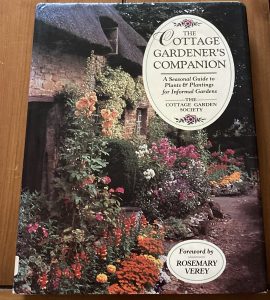
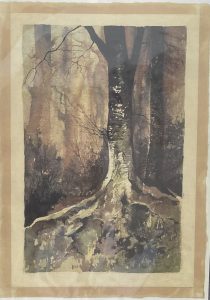
Ashdown Forest by Pat Collison.
Christine and I attended the service and were glad to find a long term friend there. As well as carers from her care home who said that her time with them was happy. She was, they all agreed “a lovely lady who could whistle a good tune”.
PAT.
Hunched with collar turned
Stick firmly grasped for support.
Leather walking shoes to feet
She launches daily to check
that nature is growing
just as she left it yesterday.
A day seldom passes
without which she steps out
to walk the woods.
She knew every tree and plant
And what it was trying to achieve.
She would pat and encourage the trees.
Clip snap and chop at the interloper briars
And nettles that threatened to impede
her way.
One day she forgot why
she was there.
and left the woods to continue
without her.
By Paula Piggott, July 2023.
Nature Friendly Verges
by Trevor Morgan
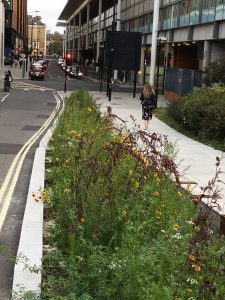
Camley St, London Oct 2020
Last November Bromley council initiated a two-year trial to test the viability of Nature Friendly Verges. The idea of Nature Friendly Verges is also supported by national Wildlife Trusts. Bromley council has selected 11 local sites for the management of verges in the borough; and 3 of them are near to us: Court Road, Warren Road and Ormonde Avenue.
The idea is to allow wildflowers, grass and bushes to grow on verges where pedestrian and traffic safety is not compromised.
There are 520 miles of road in the Borough where verges could be left to their own devices or managed with a lighter touch.
In England and Wales there is a huge area of verges, which has been calculated to be equivalent to the size of Nottinghamshire or 200,000 ha, which can be used to promote the welfare of wildlife and provide environmental benefits. Verges would be managed to allow wildflowers to thrive and help the insects which use them to grow and multiply. This will also benefit the wild birds and small mammals which feed on the insects in the verges. Hopefully, there will also be a blaze of colour from the wildflowers and butterflies to brighten up our car journeys and country walks. Another benefit would be to reduce energy consumption.
I am all in favour of Nature Friendly Verges where they do not compromise safety, but, of course, most of the wildflower population will comprise Dandelions, however I find them rather beautiful; the idea that they are just weeds is surely only a value judgement. Dandelions are used by bees to produce honey and you can eat their leaves in a salad. Their close relative, the White Dandelion, is an attractive garden flower.
I am hoping that we can all support Bromley Council’s laudable nature friendly initiative to make our lives a little more colourful.
Nature Friendly Verges – London Borough of Bromley
Managing road verges for wildlife | The Wildlife Trusts
http://highburywildlifegarden.org.uk/the-garden/bees-faves/dandelion/
https://davesgarden.com/guides/pf/showimage/167224/
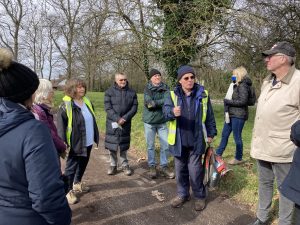
VISIT TO CHISLEHURST COMMONS
On 15th March a number of the Friends visited Chislehurst Commons at the invitation of Peter Woodward from the Chislehurst Friends group. Chislehurst Commons was established under an Act of Parliament of 1888, which set out a Scheme of Management by a Board of Trustees for the 180 acres of common land. The Board of trustees undertake the management and protection of the Commons which are therefore run differently to our own site.
We were met by Peter and Mary (Paul couldn`t make it!) near the Old Fire Station opposite The Tiger`s Head pub and were talked through the history of the Commons which as many of you will know consist of woodland, grassland and three main ponds. There are areas of thin, acid soil which support plants such as sheep`s sorrel although these were not all apparent at this time.
We were guided through the work of the Friends and were extremely impressed with their knowledge and their level of involvement in managing the site. They need to raise substantial funds each year (£60-70,000) to add to the £35,000 they receive from the Council. Much of this comes from local businesses and residents as well as from fetes and craft fairs held twice a year.
We were shown the Prince Imperial Monument commemorating Louis Napoleon, son of the exiled Emperor Napoleon III who lived at Camden Place adjacent to the Commons.
The commons are crisscrossed by approximately 12 miles of roads and are consequently noisier than we are used to at Darrick and Newstead. However, they do attract a good many bird species and have registered roughly 26 of the butterflies recorded in Britain.
We visited the cricket ground and the ponds, made by gravel extraction in the nineteenth century. The impressive ponds are home to several water birds including Mallards, Canada Geese and Coots. They have been visited by Heron and Kingfishers and there is one particular Mandarin duck which seems to have an identity crisis as it is always in the company of a particular Mallard.
We finished our tour in an opening in the woodland where the Friends have relented and allowed the positioning of one of the famous Chislehurst Bear wood carvings. It was a very entertaining and enjoyable stroll around an area which some of us will be familiar with but without having appreciated the tremendous hard work which goes into its maintenance.
Martin Stone
